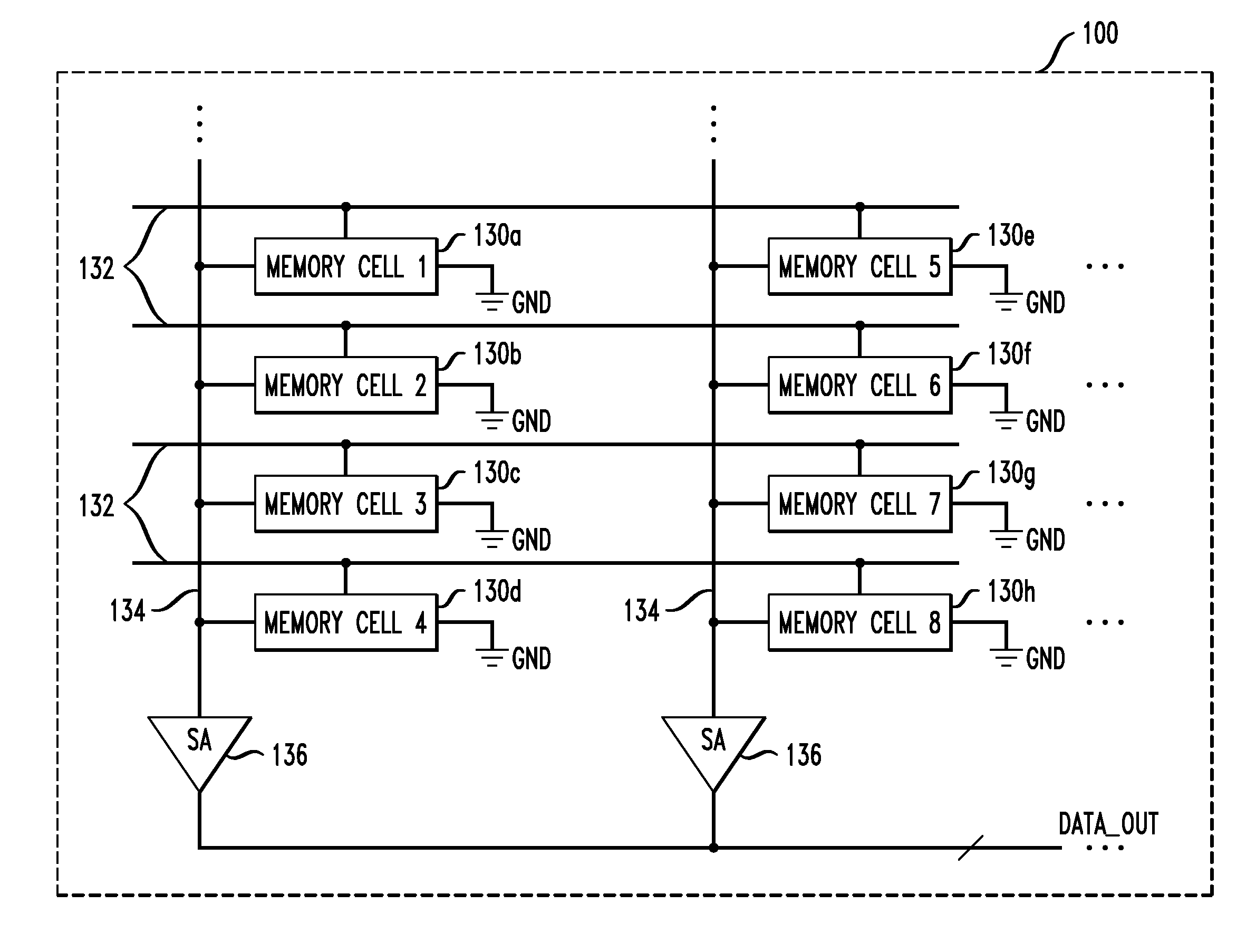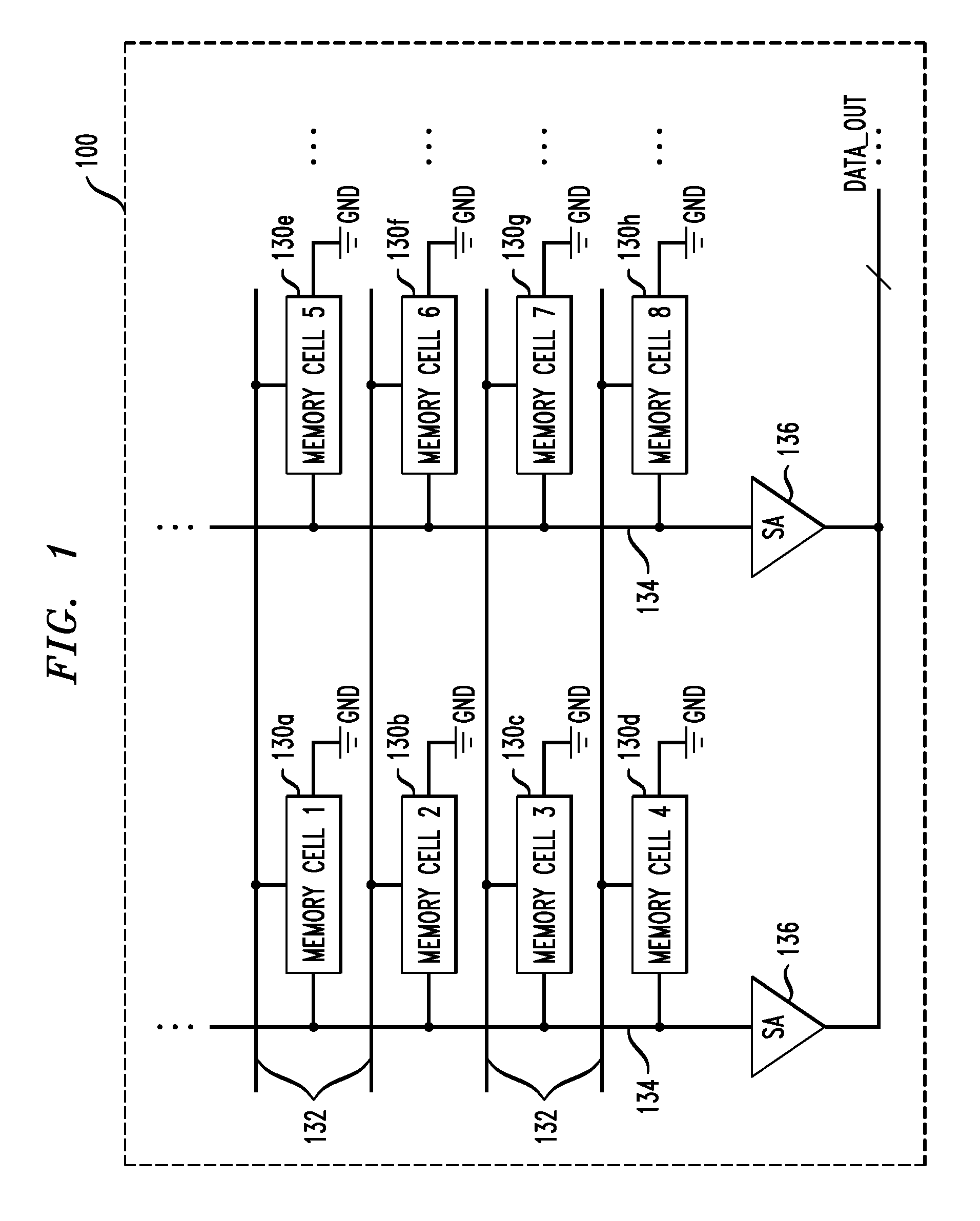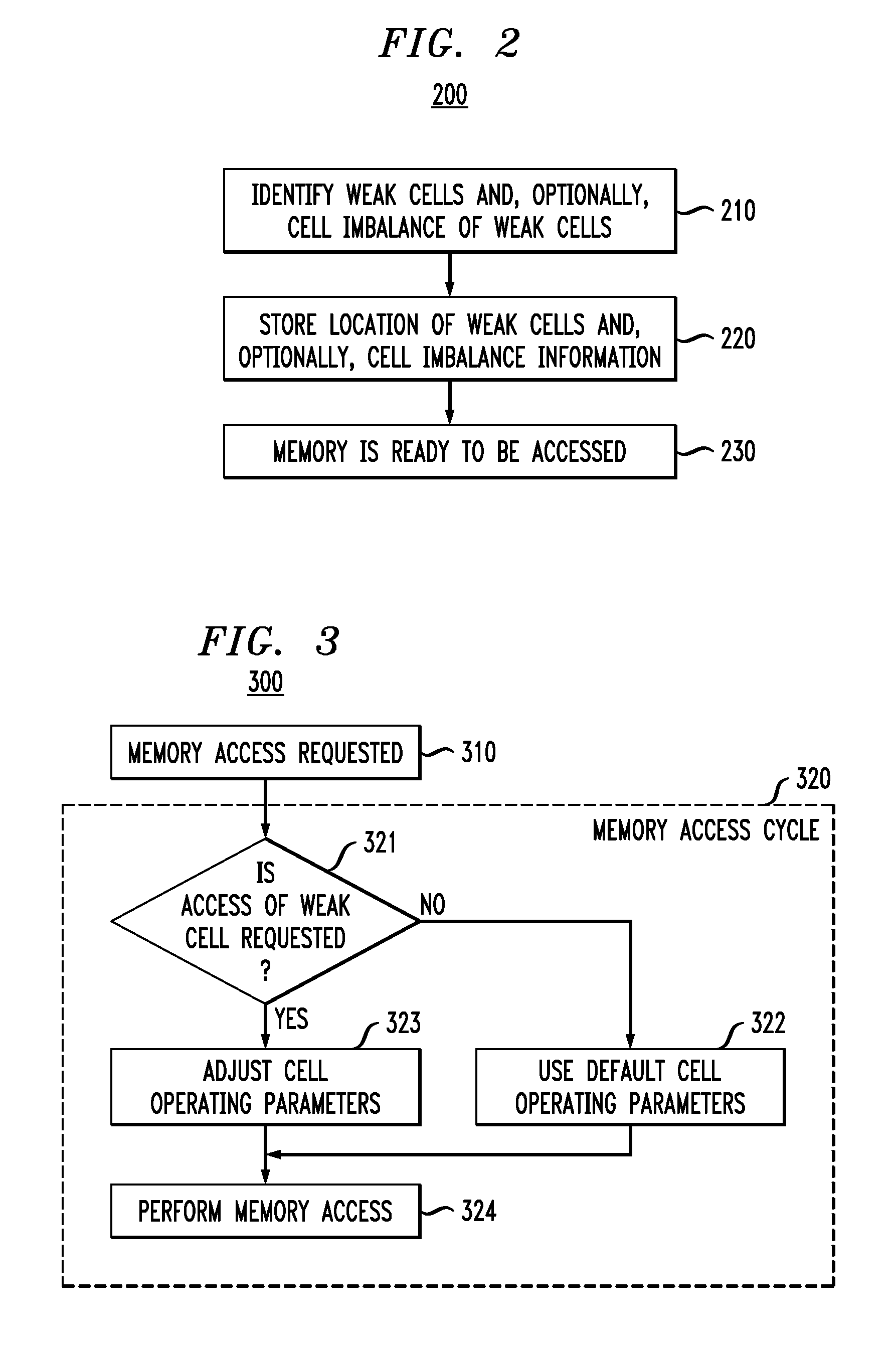Accessing Memory Cells in a Memory Circuit
a memory circuit and memory cell technology, applied in the field of memory circuits, can solve the problems of increasing power consumption in the memory circuit, degrading performance, and affecting so as to reduce the read access time and reduce the overall performance of the memory circuit. the effect of degrading the overall performance of the memory circui
- Summary
- Abstract
- Description
- Claims
- Application Information
AI Technical Summary
Benefits of technology
Problems solved by technology
Method used
Image
Examples
Embodiment Construction
[0016]The present invention will be described herein in the context of illustrative embodiments of a memory circuit and methods for accessing a memory circuit having weak memory cells. It is to be appreciated, however, that the techniques of the present invention are not limited to the specific circuit and methods shown and described herein. Rather, embodiments of the invention are directed broadly to improved techniques for ensuring proper operation of weak memory cells in a memory circuit without undesirably operating all of the memory cells in the memory circuit using timing, voltage, and / or other parameters of the weak cells and without incurring the relatively high cost of providing memory cell redundancy. For this reason, numerous modifications can be made to the embodiments shown that are be within the scope of the present invention. Moreover, although preferred embodiments of the invention are preferably fabricated in a silicon wafer, embodiments of the invention can alterna...
PUM
 Login to View More
Login to View More Abstract
Description
Claims
Application Information
 Login to View More
Login to View More - R&D
- Intellectual Property
- Life Sciences
- Materials
- Tech Scout
- Unparalleled Data Quality
- Higher Quality Content
- 60% Fewer Hallucinations
Browse by: Latest US Patents, China's latest patents, Technical Efficacy Thesaurus, Application Domain, Technology Topic, Popular Technical Reports.
© 2025 PatSnap. All rights reserved.Legal|Privacy policy|Modern Slavery Act Transparency Statement|Sitemap|About US| Contact US: help@patsnap.com



